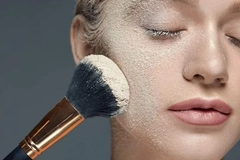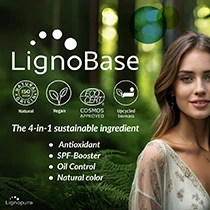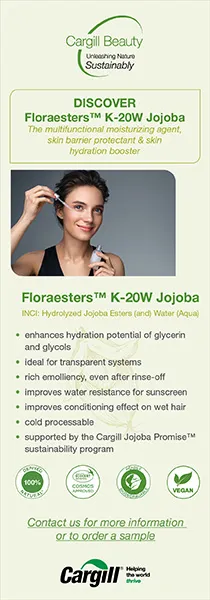Cannabis and octopus-inspired molecule emerge as alternatives amid multifunctional sunscreen demands
09 Aug 2024 --- As consumer preferences for sun protection evolve, Veylinx’s study of over 1,609 US consumers suggests multifunctional sun protection products stand to benefit from the shift. A new study suggests incorporating cephalopod-inspired compound Xanthochrome (ammonium xanthommatin) in mineral sunscreens boosts protection, while another explores the anti-aging benefits of Cannabis sativa leaf extract (CLES) in protecting skin against UV-induced aging.
Beyond UV defense
Behavioral research company Veylinx highlights changing consumer preferences in the sunscreen market as high temperatures prompt more Americans to seek sun protection.
Consumers showed a preference for Neutrogena (41%), followed by Cerave (38%), Coppertone (35%), Olay (33%), Supergoop (17%) and Target’s Up & Up brand (14%).
Demand for sunscreens with anti-aging benefits increased by 49%, while demand for hydrating products increased by 33% and those with vitamin C by 23%. The trend reflects an increase in consumer awareness of sun protection benefits beyond basic UV defense.
Meanwhile, Supergoop’s hydrating products had the highest prices.
 Consumers showed an overall preference for Neutrogena (41%).Sun protection worries
Consumers showed an overall preference for Neutrogena (41%).Sun protection worries
Veylinx’s study also clarifies perceptions of sun exposure. Although 71% of people enjoy being in the sun, 38% say they never feel completely at ease because they are worried about getting sunburned. More than 60% of respondents burn easily, and 41% worry about skin damage. Concerns about “what does skin cancer look like” are reflected in the Google search spike, suggests Veylinx.
Twenty-one percent use sunscreen every day during the summer, applying it five to six times a week and 30% do so daily. However, Veylinx believes there is a need for ongoing education regarding year-round sun protection, as only 27% of people use sunscreen year-round and 32% only apply it on sunny days. Additionally, 65% of consumers prefer sunscreens with SPF greater than 40.
Business opportunities
According to Veylinx, beauty brands have a big chance to meet consumer demand by combining sun protection with skin care benefits. Nearly three-quarters of respondents preferred tinted foundation with sun protection and 57% preferred moisturizers with integrated SPF. Demand for clear sunscreens, which do not leave a white cast, is 16% higher than for traditional lotions and creams.
 Veylinx tested consumer preferences and willingness to pay for basic versions of popular sunscreen brands compared to conceptual versions enhanced with new benefits.Twenty-seven percent of customers prefer reef-safe sunscreens, and they are willing to pay 14% more for them. However, only 16% opt for sustainable packaging and are unwilling to pay a premium for it.
Veylinx tested consumer preferences and willingness to pay for basic versions of popular sunscreen brands compared to conceptual versions enhanced with new benefits.Twenty-seven percent of customers prefer reef-safe sunscreens, and they are willing to pay 14% more for them. However, only 16% opt for sustainable packaging and are unwilling to pay a premium for it.
Cephalopod-inspired chemistry
According to a new study published in the International Journal of Cosmetic Science, incorporating Xanthochrome, a synthetic form of the natural chromophore xanthommatin found in octopus and squid skin, into mineral sunscreens improves their protective properties while also addressing concerns about the safety and environmental impact of common UV filters.
The study discovered that Xanthochrome enhanced the overall UV absorbance profile by 28% and the visible light (VL) blocking potential by 45% when mixed with zinc oxide (ZnO) in water-in-oil formulations.
 Xanthochrome’s marine safety profile positions it as a responsible choice for eco-conscious consumers.The study confirmed the safety and efficacy of Xanthochrome, which also included a particle-based delivery system of the compound in sunscreens based on ZnO. Tests on coral cuttings at concentrations five times higher than those used in the formulations showed no adverse effects, ensuring that Xanthochrome is safe for marine ecosystems.
Xanthochrome’s marine safety profile positions it as a responsible choice for eco-conscious consumers.The study confirmed the safety and efficacy of Xanthochrome, which also included a particle-based delivery system of the compound in sunscreens based on ZnO. Tests on coral cuttings at concentrations five times higher than those used in the formulations showed no adverse effects, ensuring that Xanthochrome is safe for marine ecosystems.
Additionally, a human patch test involving 100 subjects showed no dermal irritation or sensitization.
Meeting consumer sunscreen demands
The research comes at a time of increasing scrutiny over the “environmental toxicological effects of some chemicals used in sunscreens.”
Researchers emphasize Xanthochrome’s safety for health and the environment. Its naturalness, photostability and water-solubility are noted as valuable benefits to sunscreen formulations.
Additionally, the use of Xanthochrome addresses the growing demand for multifunctional and stable ingredients in sun care products. The researchers say its role as a photostable antioxidant and a UV/VL booster sets it apart from other ingredients currently used in the industry.
 CLES demonstrated a 45% improvement in visible light-blocking potential when used in sunscreen formulations.The findings underscore the potential of biologically inspired materials to provide advanced protection and meet consumer demands for safer, more effective sun care products.
CLES demonstrated a 45% improvement in visible light-blocking potential when used in sunscreen formulations.The findings underscore the potential of biologically inspired materials to provide advanced protection and meet consumer demands for safer, more effective sun care products.
Hemp-based photoprotection
A recent study in Cosmetics examined CLES and its potential to protect skin against UV-induced photoaging and restore aged skin cells by using an aqueous solution of hemp leaf extract.
The study showed that CLES contains cannabidiol (1.64%), delta 9-tetrahydrocannabinol (0.11%) and notable phenolic content.
CLES showed strong antioxidant qualities in lab tests, matching well-known antioxidants like L-ascorbic acid. Researchers saw that CLES decreased signs of skin aging and increased collagen production when applied to UVA-irradiated fibroblasts.
The study concludes that the extract holds potential to be used in preventing or treating photoaging. It reduced the levels of matrix metalloproteinase-1 and interleukin-6, which are associated with UV-induced skin damage. Additionally, CLES helped maintain type I procollagen levels in treated cells and lowered the presence of senescence-associated β-galactosidase, a marker of cellular aging.
By Venya Patel















